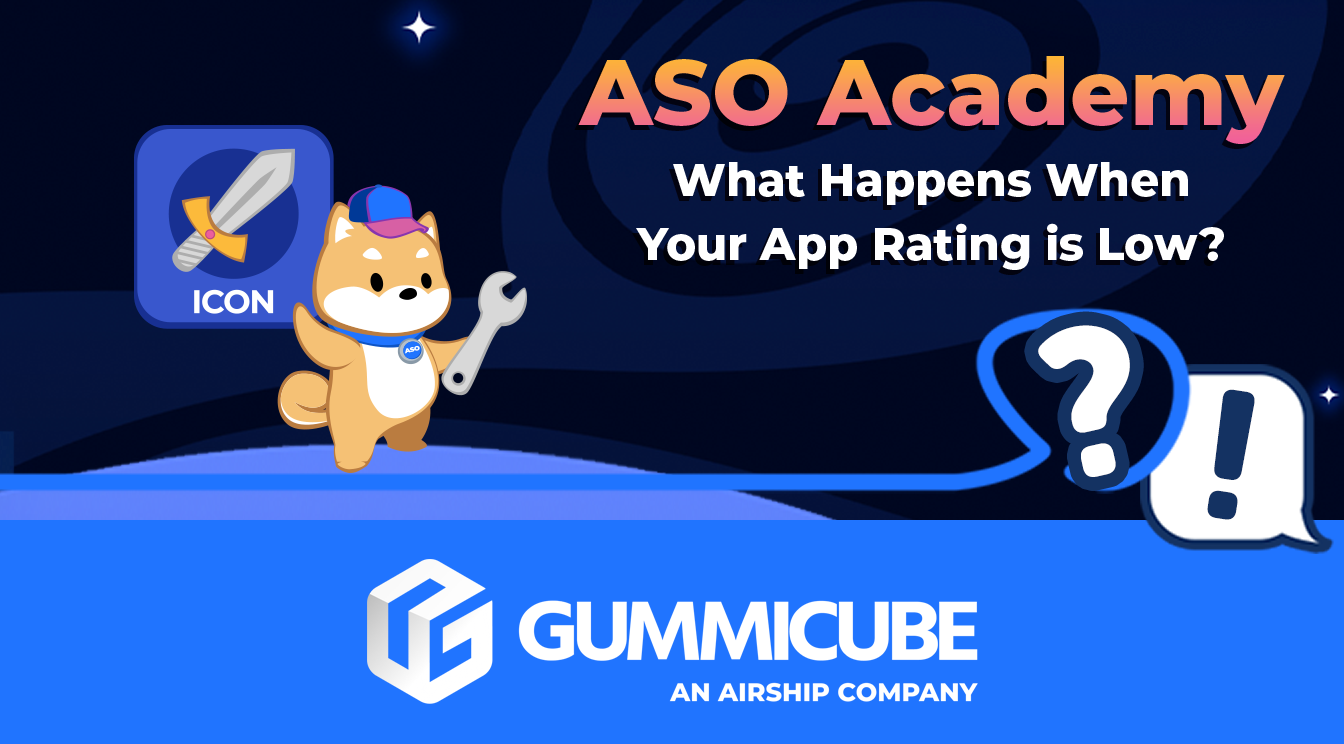
App Store Screenshot Dimensions & Guidelines
Posted on August 1st, 2024
Make sure your app stays compliant with the latest App Store Screenshot Dimensions & Guidelines here

With countless apps available on both the App Store and Google Play Store, users have a plethora of options to choose from. With some markets housing more competition than others, it’s essential for developers to create an experience that attracts users and keeps them.
An app's rating plays a significant role in your user acquisition strategy as it can directly dictate whether a user downloads your app or not. In this ASO Academy, we’ll explore the consequences of having a low app rating and discuss the ASO (App Store Optimization) implications. We will also delve into the common causes of a low app rating and provide actionable strategies to improve it.
Understanding why your app has a low rating can help you identify what areas need improvement and how you can avoid the same mistakes in the future. Below are some common reasons behind low app ratings:
Frequent crashes, slow performance, or bugs can frustrate users and hinder performance, at times even preventing them from using the app altogether. Users expect apps to be stable and functional, and technical issues can erode trust and cause them to leave a bad rating & review.
Users want apps that are intuitive and purposeful. Complex navigation, confusing interfaces, and an overall lack of user-friendliness can lead to uninstalls and disappointment reflected through a negative rating or review.
Outdated apps can accumulate negative reviews due to compatibility issues or the absence of new features. As technology and market expectations progress, so should your app features. Regular updates demonstrate commitment to improvement and to keeping users satisfied.
Ignoring user feedback or failing to address issues promptly can result in negative reviews and low ratings. Those negative reviews can then prompt potential users to avoid downloading your app altogether. Good customer support can mitigate negative feedback and reviews as users get a sense of the developer’s interest in improving the app.
Your app's rating has a direct impact on how the iOS App Store and Play Store algorithms treat it. Having negative reviews can stunt your mobile app growth and hamper your overall app store performance. The consequences of negative ratings that can affect your ASO include:
App stores tend to prioritize apps with higher ratings at the time of indexation, app feature considerations, and recommendations. A low rating can result in your app being buried beneath higher-rated competitors, reducing its visibility to potential users.
Even if users find your app, they are less likely to download it if the rating is low. A low rating garners distrust and can signal poor quality or usability, discouraging potential users from taking the next step.
At times, low ratings are accompanied by written reviews, further damaging your app's reputation. As a result, potential users are less likely to consider downloading if they see a considerable amount of negative feedback.
Now that you know what causes low app ratings and what happens if an app gets a 1-star review on the Play Store and App Store you can work on your own app listing before disaster strikes. Maybe your app is already suffering a negative streak and you want to stop the trend before it gets worse. Below we’ll dive into what you should do to mitigate negative ratings and reviews:
The first step to effective ASO is having a quality app. Prioritize identifying and resolving in-app technical issues promptly – from bugs to crashes to compatibility issues. This can help prevent bad ratings from one of the most common sources of negative feedback.
Conduct usability testing to identify areas for improvement in your app's design and functionality. Research the needs of users to adjust your app features, layout, and content to current market demands and improve the overall experience.
Respond to user reviews and feedback throughout all your communication channels – from the app stores to your media channels. Addressing concerns and showing your commitment to user satisfaction helps build trust among existing and potential users. Additionally, any feedback found within your App Store and Play Store reviews can provide valuable insight as to what needs improvement within the app itself.
Encourage satisfied users to leave a positive rating and review by implementing prompts within your app. A simple pop-up can be effective for reminding users to leave a quick review with their thoughts. Consider offering incentives, such as exclusive content, in exchange for reviews to enhance your possibilities.
Release updates with new features and improvements to keep users engaged and satisfied. This can be anything from seasonal content to major feature overhauls to keep a fresh in-app experience. Be sure to communicate new additions through your app metadata so that potential users can learn the benefits of each update when viewing your listing.
Keep an eye on your competitors' ratings and reviews for additional insight into user needs and pains. Identify trends among the negative reviews you find and apply best practices in your app to mitigate those same mistakes from hindering your own app growth.
Low app ratings and reviews can have detrimental effects on your App Store Optimization and overall growth. It's essential to address the root causes of low ratings, focusing on technical improvements, user experience enhancements, and engaging with your user base. By consistently working to improve your app and its rating, you can boost its visibility, attract more users, and ultimately achieve greater success in the competitive app marketplace.
Remember that an optimized app store listing, consisting of effective keyword and creative optimization, also plays a significant role when it comes time to market an app. By combining these strategies, you can increase your app's rating and drive its growth and success in the App Store and Play Store’s ecosystems.
Need help improving your ASO? Get in touch with the ASO experts at Gummicube today!

Make sure your app stays compliant with the latest App Store Screenshot Dimensions & Guidelines here

Soon developers will be able to extend their customer lifetime value with a handy new way of providing subscription offers directly through Apple. Contingent Pricing looks to act as a revolutionary new system for leveraging new upsell & cross-sell opportunities all within Apple’s ecosystem.

Have you ever A/B tested your Google Play listing? If not, you're probably navigating the Play Store marketing blind, and leaving valuable installs on the table.